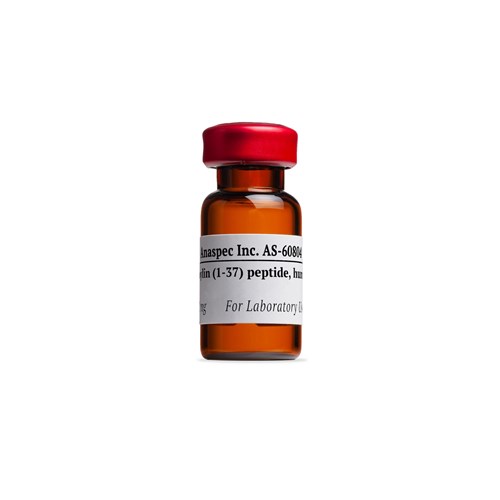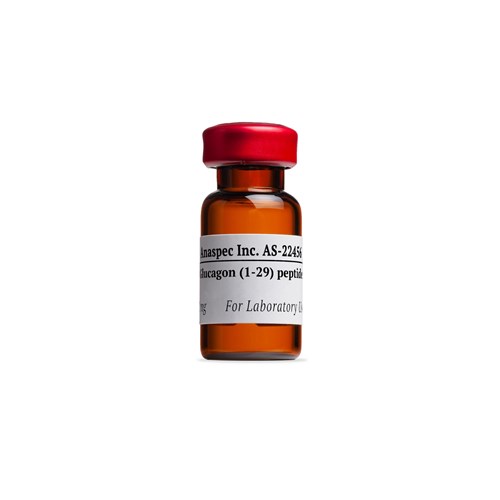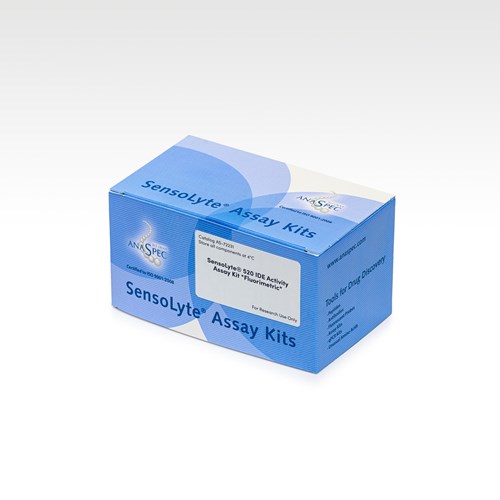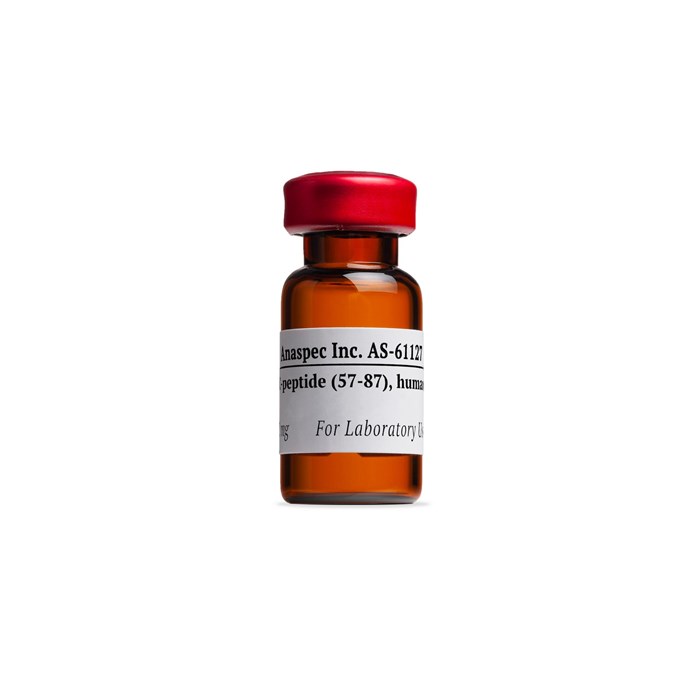C-Peptide, human - 0.5 mg
- Cat.Number : AS-61127
- Manufacturer Ref. :
-
Availability :
In stock
C-peptide is cleaved from proinsulin, stored in secretory granules, and eventually released into the bloodstream in amounts equimolar with those of insulin. The measurement of the C-peptide is an important test for the β-cell function. In the red blood cells of type 2 diabetic patients, Na+,K+ ATPase activity is strongly related to blood C-peptide levels. C-peptide signal transduction in human renal tubular cells involves the activation of phospholipase C and PKC-d and PKC-varepsilon, as well as RhoA, followed by phosphorylation of ERK1/2 and JNK and a parallel activation of Akt. C-peptide shows specific binding to a G-protein-coupled membrane binding site, resulting in Ca2+ influx, activation of mitogen-activated protein kinase signalling pathways and stimulation of Na+, K+ ATPase and endothelial nitric oxide synthase.
Pyroglutamyl (pGlu) peptides may spontaneously form when either Glutamine (Q) or Glutamic acid (E) is located at the sequence N-terminus. The conversion of Q or E to pGlu is a natural occurrence and in general it is believed that the hydrophobic γ-lactam ring of pGlu may play a role in peptide stability against gastrointestinal proteases. Pyroglutamyl peptides are therefore considered a normal subset of such peptides and are included as part of the peptide purity during HPLC analysis.
Specifications
| Chemistry | |
| Sequence one letter code |
|
|---|---|
| Sequence three letter code |
|
| CAS registry number |
|
| Molecular Formula |
|
| Molecular Mass/ Weight |
|
| Modification | |
| Conjugation |
|
| Quantity & Purity | |
| Purity |
|
| Storage & stability | |
| Form |
|
| Storage Conditions |
|
| Activity | |
| Biomarker Target | |
| Research Area | |
| Sub-category Research Area | |
| Usage |
|
| Source | |
| Source / Species |
|
| Codes | |
| Code Nacres |
|
You may also be interested in the following product(s)

Amylin (1-37), Islet Amyloid Polypeptide, IAPP, human - 1 mg


